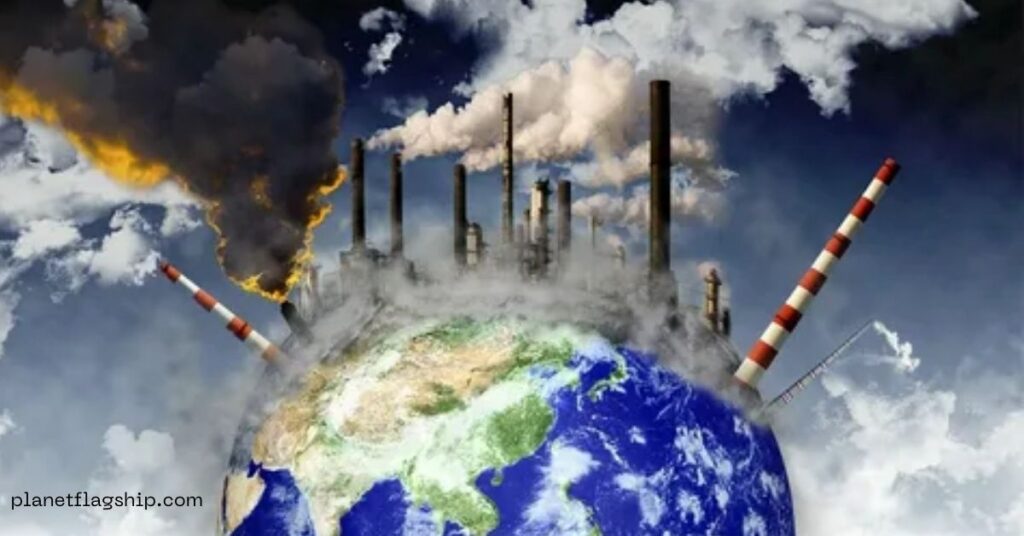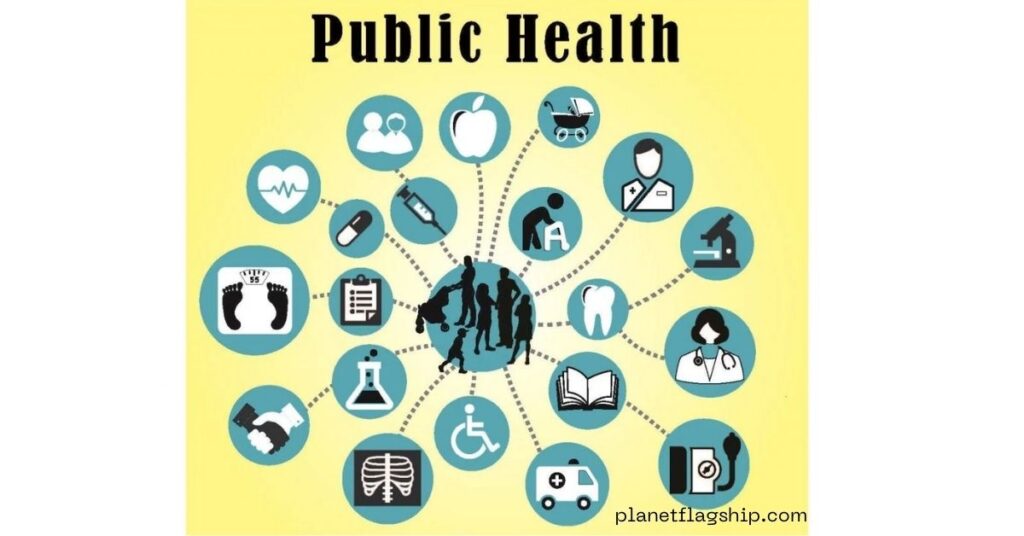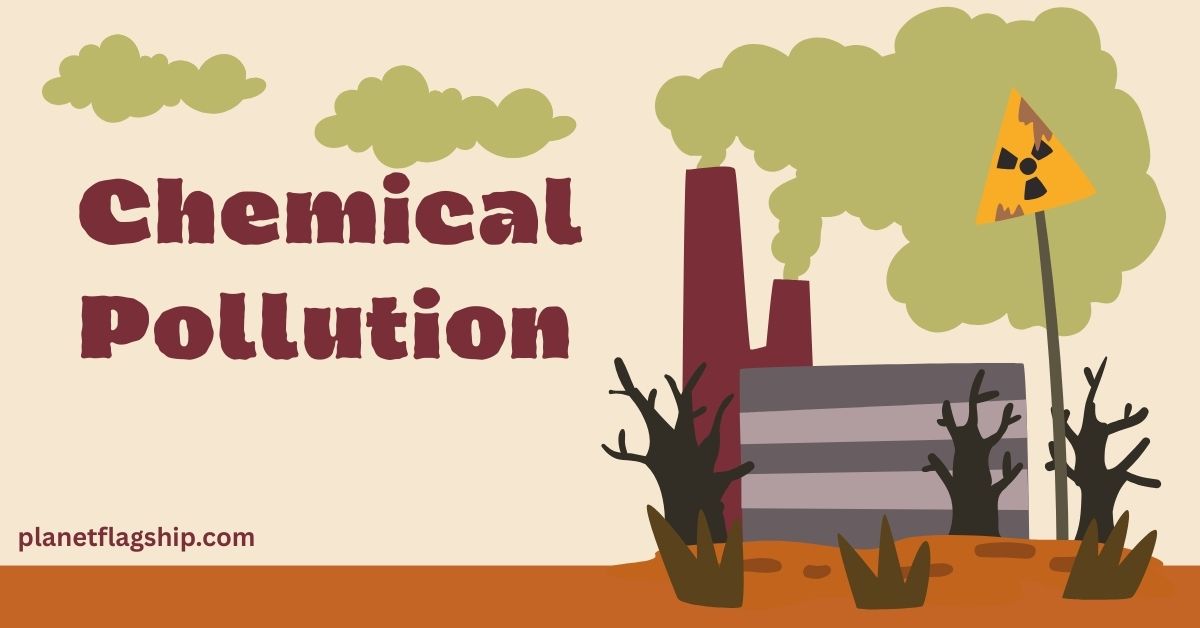INTRODUCTION
Chemical pollution has emerged as a significant yet often overlooked contributor to adverse reproductive outcomes, including congenital disabilities. While the visible impacts of pollution, such as smog and contaminated water, are widely recognized, the insidious effects of chemical pollutants on fetal development remain underappreciated.
This article examines the relationship between chemical pollution and birth defects, drawing on global research to elucidate the mechanisms, evidence, and implications of this pressing public health issue.
UNDERSTANDING CHEMICAL POLLUTION AND ITS PATHWAYS
Chemical pollution refers to the release of harmful substances into the environment, contaminating air, water, and soil. These pollutants can originate from various sources, including industrial processes, agricultural activities, and the use of household products.
Key categories of concern include:
- Persistent Organic Pollutants (POPs), such as polychlorinated biphenyls (PCBs) and dioxins, resist environmental degradation and accumulate in living organisms.
- Heavy Metals: Including lead, mercury, and cadmium, known for their toxicity and ability to interfere with biological processes.
- Endocrine-Disrupting Chemicals (EDCs), such as phthalates and bisphenol A (BPA), can interfere with hormonal systems.
- Per- and Polyfluoroalkyl Substances (PFAS) are often referred to as “forever chemicals” due to their persistence in the environment and the human body.
These pollutants can enter the human body through ingestion, inhalation, or dermal absorption, posing risks to various physiological systems, particularly during critical periods of development such as gestation.
READ MORE: The Role of Global Climate Agreements: Are They Doing Enough?
Mechanisms Linking Chemical Exposure to Birth Defects
The developing fetus is highly susceptible to environmental insults, and exposure to certain chemicals during pregnancy can lead to structural or functional anomalies. Mechanisms by which chemical pollutants can cause congenital disabilities include:
- Genotoxicity: Certain chemicals can damage DNA, resulting in mutations that manifest as congenital anomalies.
- Endocrine Disruption: EDCs can interfere with hormonal signaling pathways essential for normal development.
- Oxidative Stress: An imbalance between free radicals and antioxidants can damage cellular components, affecting fetal growth.
- Nutrient Interference: Certain pollutants can disrupt the metabolism or availability of essential nutrients, such as folate, which is critical for neural tube development.
Global Evidence of Chemical Pollution Impacting Birth Outcomes

Iraq: Heavy Metal Contamination and Birth Defects
In the aftermath of military conflicts, Iraqi cities like Al Basrah and Fallujah have reported alarming increases in congenital disabilities. A study published in the Bulletin of Environmental Contamination and Toxicology highlighted a 17-fold increase in congenital anomalies at Al Basrah Maternity Hospital between 1994 and 2003. Biological samples from affected populations revealed elevated levels of heavy metals, including lead and mercury, suggesting a link between environmental contamination and adverse birth outcomes.
Vietnam: The Legacy of Agent Orange
The extensive use of the dioxin-contaminated herbicide Agent Orange during the Vietnam War resulted in widespread environmental and human exposure. The Vietnamese government estimates that up to 3 million individuals have suffered health issues because of this exposure, with many cases of birth defects reported among their offspring.
Italy: The Seveso Disaster
In 1976, an industrial accident in Seveso, Italy, released a significant amount of dioxin into the environment. Subsequent studies observed increased rates of reproductive issues and birth defects among the exposed population, underscoring the long-term health implications of acute chemical exposure events.
United States: Love Canal Incident
The Love Canal neighborhood in New York became infamous in the late 1970s when residents reported high rates of miscarriages and congenital disabilities. Investigations revealed that the area had been built over a toxic waste dump, resulting in the leaching of hazardous chemicals into homes and the surrounding environment.
China: Air Pollution and Congenital Anomalies
A study in Xi’an, China, found a strong link between exposure to air pollutants, such as nitrogen dioxide (NO₂) and particulate matter (PM₁₀), before birth and an increased risk of birth defects, including neural tube defects and congenital heart diseases.
SPECIFIC CHEMICALS OF CONCERN
Polychlorinated Biphenyls (PCBs)
Once widely used in industrial applications, PCBs have been linked to various health issues, including low birth weight and developmental delays. Despite being banned in many countries, their persistence in the environment continues to pose risks.
Phthalates
Commonly found in plastics and personal care products, phthalates are known as EDCs. Studies have associated prenatal exposure to phthalates with shortened gestational age and developmental issues in children.
Lead
Lead exposure, even at low levels, can have detrimental effects on fetal development. It can cross the placental barrier, leading to neurodevelopmental disorders and other birth defects.
Per- and Polyfluoroalkyl Substances (PFAS)
PFAS are synthetic chemicals used in various consumer products due to their water- and stain-resistant properties. They have been linked to reduced birth weights and developmental issues in infants.
GLOBAL DISPARITIES IN CHEMICAL POLLUTION EXPOSURE

While high-income countries have established regulations to control chemical pollution, many low- and middle-income countries (LMICs) face disproportionate exposure due to lax enforcement and limited infrastructure. E-waste processing in countries like Ghana and India exposes local populations especially pregnant women to a cocktail of toxic substances, including flame retardants, lead, and mercury.
A study in Environmental Research (2016) found elevated blood lead levels among pregnant women living near informal battery recycling sites in Nigeria, correlating with increased stillbirths and congenital abnormalities (Nweke & Sanders, 2009).
MATERNAL BIOMARKERS AND EARLY DETECTION
Advances in biomonitoring have enabled the detection of chemical pollutants in maternal blood, urine, and even hair samples, providing early warnings of potential fetal exposure. For example, elevated phthalate metabolites in maternal urine during the first trimester have been associated with increased risks of hypospadias and cryptorchidism in male fetuses.
A study published in Environmental Health Perspectives in 2011 emphasized the potential for biomonitoring data to inform both clinical decision-making and public health surveillance (Sathyanarayana et al., 2011).
OCCUPATIONAL EXPOSURE AND HIGH-RISK GROUPS
Women employed in agriculture, textile industries, and waste management often face heightened exposure to pesticides, solvents, and industrial byproducts. A 2014 meta-analysis in the Journal of Occupational Health found that women working in agriculture had a significantly higher incidence of neural tube defects and limb malformations in offspring due to pesticide exposure.
Similarly, nurses and hospital workers exposed to anesthetic gases or cytotoxic drugs without adequate protection face increased risks of spontaneous abortions and congenital anomalies.
SOCIO-ENVIRONMENTAL JUSTICE AND VULNERABLE POPULATIONS
Environmental injustice plays a significant role in exposure patterns. Communities of color and marginalized groups often live in closer proximity to industrial facilities, waste incinerators, and polluted water sources.
In Flint, Michigan, for example, predominantly Black residents were disproportionately affected by lead-contaminated drinking water, resulting in a public health emergency with long-term developmental consequences for children born during the crisis.
This crisis highlighted the intersection of environmental health and systemic racism, urging for reforms that prioritize equitable environmental protections.
EPIGENETIC EFFECTS AND INTERGENERATIONAL TRANSMISSION
Recent research suggests that chemical exposures may induce epigenetic changes—heritable modifications in gene expression that do not involve alterations in the DNA sequence. These changes may influence not just the exposed fetus but potentially future generations.
A study on endocrine disruptors, such as BPA, has shown altered DNA methylation patterns in both mice and humans, affecting reproductive outcomes across multiple generations (Skinner et al., 2013).
POLICY AND REGULATORY RESPONSES
Recognizing the threats posed by chemical pollutants, various international and national bodies have implemented measures to mitigate exposure:
- Stockholm Convention: An international treaty aimed at eliminating or restricting the production and use of persistent organic pollutants.
- Environmental Protection Agency (EPA) Initiatives: In the United States, the EPA has developed action plans to address the risks associated with chemicals like PFAS, including setting regulatory limits and promoting research.
- European Union’s Seveso Directives: Established in response to the Seveso disaster, these directives aim to prevent and control major chemical accidents.
PUBLIC HEALTH IMPLICATIONS AND RECOMMENDATIONS

The pervasive nature of chemical pollutants necessitates a multifaceted approach to protect vulnerable populations, especially pregnant women and developing fetuses:
- Enhanced Monitoring: Regular surveillance of environmental pollutants and their associated health impacts can facilitate early detection and intervention.
- Public Education: Raising awareness about the sources and risks of chemical exposures can empower individuals to make informed choices.
- Policy Enforcement: Strict enforcement of environmental regulations can reduce the release of harmful chemicals into the environment.
- Research and Innovation: Investing in research to develop safer alternatives to hazardous chemicals can lead to sustainable solutions.
FAQ’s
How does chemical pollution affect human health?
Chemical pollution harms health by contaminating air, water, and soil with toxic substances. These pollutants can cause DNA damage, disrupt hormones, and weaken immune systems. Pregnant women and developing fetuses are especially vulnerable to long-term effects.
What birth defects are linked to chemical exposure?
Studies show links between pollutants and neural tube defects, congenital heart issues, and low birth weight. Heavy metals like lead and mercury, along with endocrine disruptors such as BPA, increase these risks. Prenatal exposure often has lifelong consequences for children.
Which chemicals are most dangerous during pregnancy?
Persistent Organic Pollutants, phthalates, PFAS, and heavy metals pose the highest risks. These substances cross the placental barrier and interfere with fetal growth. Even low-level exposure can trigger developmental delays or congenital abnormalities.
Why are low- and middle-income countries more at risk?
Weaker regulations and unsafe waste practices expose vulnerable populations to higher chemical levels. E-waste sites in countries like Ghana, India, and Nigeria increase risks for pregnant women. Lack of infrastructure magnifies health problems linked to pollution.
What solutions exist to reduce chemical pollution risks?
Solutions include stricter policies, better environmental monitoring, and safer alternatives to harmful chemicals. Public education empowers families to minimize daily exposure. Global treaties like the Stockholm Convention also play a vital role in reducing long-term risks.
CONCLUSION
Chemical pollution represents a silent yet profound threat to reproductive health worldwide. The evidence linking environmental contaminants to birth defects underscores the need for comprehensive strategies that encompass regulation, education, and innovation. By acknowledging and addressing this invisible health crisis, societies can safeguard future generations from preventable harm.

John is a professional blogger and passionate advocate for environmental sustainability. With years of experience exploring eco-friendly practices and green innovations, he shares insightful articles on Planet Flagship to inspire a sustainable future. John’s expertise lies in making complex environmental topics accessible and actionable, empowering readers to make meaningful changes for the planet.
